 The message of the Bible which we now have in a printed form did not always exist as a printed text. God’s message was delivered to Prophets, religious and political leaders and many inspired people. It was delivered to them in oral form and as such existed in oral form for many centuries before it was finally reduced to writing with the invention of alphabets and writing systems.
The message of the Bible which we now have in a printed form did not always exist as a printed text. God’s message was delivered to Prophets, religious and political leaders and many inspired people. It was delivered to them in oral form and as such existed in oral form for many centuries before it was finally reduced to writing with the invention of alphabets and writing systems.
When God’s message to mankind was reduced from oral form to written form, the material on which the message was written included broken pottery, stone tablets, barks of trees and plants and later on papyrus and animal skins. The writing was done in one continuous block without breaks. Later shorter sheets were used to do the writing and these sheets were bound together to form codices (codex, singular). Codices did not exist until around the 2nd Century B.C.
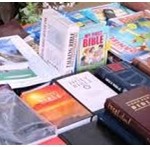 There were no printing presses as such much of the writing had to be done by hand. When a copy was made, this copy became the source of copying by other scholars as a way of multiplying the scripts for different communities and peoples. As such we can speak of mothers and daughters and sons of a text. When an original document was used for the copying, it became the mother text and all copies made from it were the daughter texts. Somebody could also collect a daughter text and copy from it and the process continued unabated. In the excavation in Qumran, a scriptorium was discovered. This is a room most probably used for writing and the copying of scripts.
There were no printing presses as such much of the writing had to be done by hand. When a copy was made, this copy became the source of copying by other scholars as a way of multiplying the scripts for different communities and peoples. As such we can speak of mothers and daughters and sons of a text. When an original document was used for the copying, it became the mother text and all copies made from it were the daughter texts. Somebody could also collect a daughter text and copy from it and the process continued unabated. In the excavation in Qumran, a scriptorium was discovered. This is a room most probably used for writing and the copying of scripts.
Textual studies of biblical books in the Qumran scrolls show that there was no uniform, commonly accepted text of the Hebrew Bible in the time of Jesus. Instead, we need to speak of text families. Scribes like those at Qumran copied by hand from a mother text, and we can speak of the copies as sons or daughters of that mother text. A group of manuscripts all deriving from a particular manuscript are called a text family or a text tradition. For example, the Hebrew text from which the Septuagint Greek translation was made was from a different family from the Hebrew text used over the centuries by the Jewish communities in Israel and Babylonia.
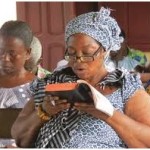 As it is a common human weakness, when a document is being copied, there are a variety of ways errors could be introduced into the copies of the original text. Some of these errors could be accidental, such as the eye of a copyist jumping from one similar word to another, thereby causing the copyist to miss out some portion of the text or even repeat the text depending on whether the error was committed below or above the point of copying. There were also times when the copyist could misread an alphabet. This could alter the meaning of the word significantly. For example, in Isaiah 32.19 the masoretic text has ha-`ir, (the city). One of the scrolls of Isaiah found at Qumran has ha-ya`ar (the forest).
As it is a common human weakness, when a document is being copied, there are a variety of ways errors could be introduced into the copies of the original text. Some of these errors could be accidental, such as the eye of a copyist jumping from one similar word to another, thereby causing the copyist to miss out some portion of the text or even repeat the text depending on whether the error was committed below or above the point of copying. There were also times when the copyist could misread an alphabet. This could alter the meaning of the word significantly. For example, in Isaiah 32.19 the masoretic text has ha-`ir, (the city). One of the scrolls of Isaiah found at Qumran has ha-ya`ar (the forest).
A particular manuscript might be damaged, or changes could be introduced―on purpose or by accident―by a scribe into a copy he was making. When that happened, later copies made from that changed manuscript would reflect those same changes. It should be pointed out that all this exercise was going on only with the books of the Hebrew Bible (The Old Testament section accepted by the Jews which consist of 39 books of the Bible. These 39 books did not include the Deuterocanonical books, popularly but wrongly referred to as Apocrypha.
After the canon of the Hebrew Bible had been determined and the text standardized near the end of the first century AD, scribes were no longer allowed to change the text in any way. Even though errors are unavoidable when copying a long text, the Jewish scribes did this with great care. Christian copyists preserved the Septuagint and other translations of the Old Testament, but it was only Jews who copied the Hebrew Bible.
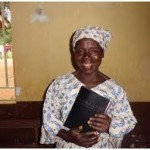 The group of Jewish scribes who played the most important role in this process were scribes and rabbis called the Masoretes, from a Hebrew word meaning to “transmit” or “hand down.” Their job was to preserve the text, not only by making exact copies but also by guaranteeing that it was pronounced and interpreted correctly. They did this by adding vowel signs and accent marks to the consonantal text. They also counted the letters of each copy they made to ensure that they had not missed or added a letter. In addition to this they added notes called Masorah. These notes were mainly statistics indicating variations in spelling and how many times a word was spelled in a certain way. They sometimes also provide alternate readings to what is in the text.
The group of Jewish scribes who played the most important role in this process were scribes and rabbis called the Masoretes, from a Hebrew word meaning to “transmit” or “hand down.” Their job was to preserve the text, not only by making exact copies but also by guaranteeing that it was pronounced and interpreted correctly. They did this by adding vowel signs and accent marks to the consonantal text. They also counted the letters of each copy they made to ensure that they had not missed or added a letter. In addition to this they added notes called Masorah. These notes were mainly statistics indicating variations in spelling and how many times a word was spelled in a certain way. They sometimes also provide alternate readings to what is in the text.
The work of the Masoretes was carried out mostly between the eighth and the eleventh centuries in the city of Tiberias. The invention of printing made it possible to produce many identical copies in a very short time. The first Hebrew Bibles were printed in the 15th century AD. The printers chose a manuscript of the Masoretic Text known as Codex Leningradensis, which was a complete text from the year 1009 AD. The printed Masoretic Text became the standard text for the Jewish people, and it remains so until today.
Similarly, the New Testament as we know it today has twenty-seven writings. These include four accounts of Jesus’ activities, teaching, death, and resurrection. It also has a history of the spread of the gospel until about the year 62 (Acts of the Apostles) as well as an apocalyptical writing (The Book of Revelation). There are also twenty-one letters, majority of which are assigned to Paul. All of these writings were produced within a period of 100 years or less, starting around the year 50 AD. In general we can say that the New Testament books were written in the eastern half of the Roman Empire by leaders of the young church.
The letters of Paul were probably the earliest of the New Testament writings. We know quite a lot about Paul, who wrote letters to churches and individuals up until his death in Rome in about 64 AD. Many people in the churches to which Paul wrote were literate. Letters from Paul and other leading figures were not treated at first as sacred text, although they were highly prized and shared around and copied freely. Copies were sent to nearby churches.
The same problems that arose from the copying of the Hebrew Bible also arose in the copying of the New Testament literature. The difference however is that whereas the Hebrew Bible was copied by trained experts, the New Testament literature were copied by non-professionals and individuals who were available and probably in a rush in order to get the original as well as their own product to more churches that needed copies. The rapid spread of Christianity increased the need for manuscripts, as every local church wanted to have its own copies. Roman persecution of the Christians often resulted in widespread destruction of books, and this in turn created a need for more copies.
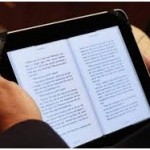 As a result, this led to a great variety of texts of New Testament writings. For some portions of the New Testament today we have more than 5000 ancient manuscripts whose readings can vary widely. New Testament scholars have to compare the many existing manuscripts for each of the twenty-seven books and decide for each verse or phrase which text most probably reflects the original. This reconstruction is sometimes called a “critical text.” The critical text we use now is named after the scholars Nestlé and Aland. Because the best readings are selected, the New Testament Greek text is also called an “eclectic” text, from a word meaning “to choose.”
As a result, this led to a great variety of texts of New Testament writings. For some portions of the New Testament today we have more than 5000 ancient manuscripts whose readings can vary widely. New Testament scholars have to compare the many existing manuscripts for each of the twenty-seven books and decide for each verse or phrase which text most probably reflects the original. This reconstruction is sometimes called a “critical text.” The critical text we use now is named after the scholars Nestlé and Aland. Because the best readings are selected, the New Testament Greek text is also called an “eclectic” text, from a word meaning “to choose.”
To summarize, translations of the Bible are done from the Hebrew text for the Old Testament books and from the Greek Text for the New Testament books. Because of the history of how the text came down to us, the Masoretic text is accepted as the source text for Old Testament translations and the Greek New Testament text (Nestlé-Aland text) is used for the translation of the New Testament because it was arrived at through a careful comparison of the variety of texts available.
F. N. Dapila, PhD
Bible Translation Consultant
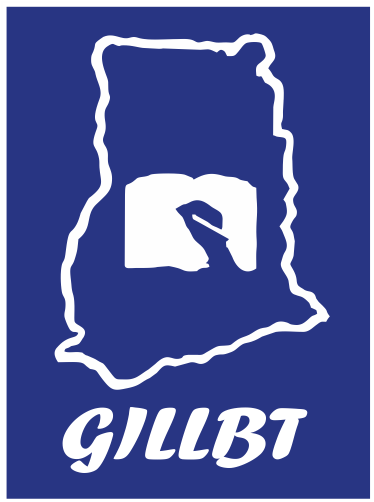
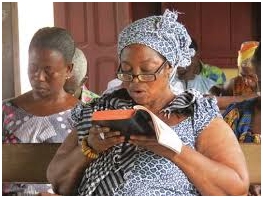
Please kindly assist me to know which year that Bible came Ghana particularly